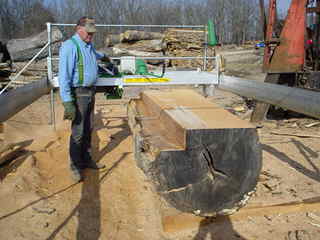Question
I have heard recently that some kiln operations are using an in-line moisture meter to detect the wet lumber. As they are drying hardwoods, they set it at 8.5% MC maximum. The kiln operator is supposed to get all the lumber below this value, but he is allowed up to 3% that the meter indicates is wet. When they have enough wet lumber, then they re-dry this lumber. I can see that this is going to reduce kiln time slightly, especially for quartersawn or for a pack that is wet and should not be in the kiln with all the dry lumber or just because. I can see that they must think that shortening the kiln time saves more than the expense of re-drying. As I have never heard of this before, I would like to hear comments.
Forum Responses
(Commercial Kiln Drying Forum)
From Gene Wengert, forum technical advisor:
I have seen this done with softwoods from time to time, but I have only seen it with hardwoods twice and both were recent. I have seen a lot of hardwood operations that do produce a little wet lumber (by accident), but it is rare that an in-line meter is used to pull any wet lumber for re-drying. I think that what you describe is a step in the right direction. I do not know if 3% is the magic number (costs are different for each operation), but 3% seems reasonable.
Perhaps equally important in such an operation is to provide the kiln operator with a measure of the variation of MC. Variation and average MC are both important. One measure of variation is the Standard Deviation (SD). A good drying operation will be at SD = 0.6 or less. Incidentally, when re-drying, start the kiln with an EMC that is halfway between the highest MC and the target MC. Example: Highest MC is 15%; target is 7%. Start at 11% EMC, but without steam or water injection. Use the water in the lumber to maintain the EMC. Start at 120 F or maybe 130 F dry-bulb.
